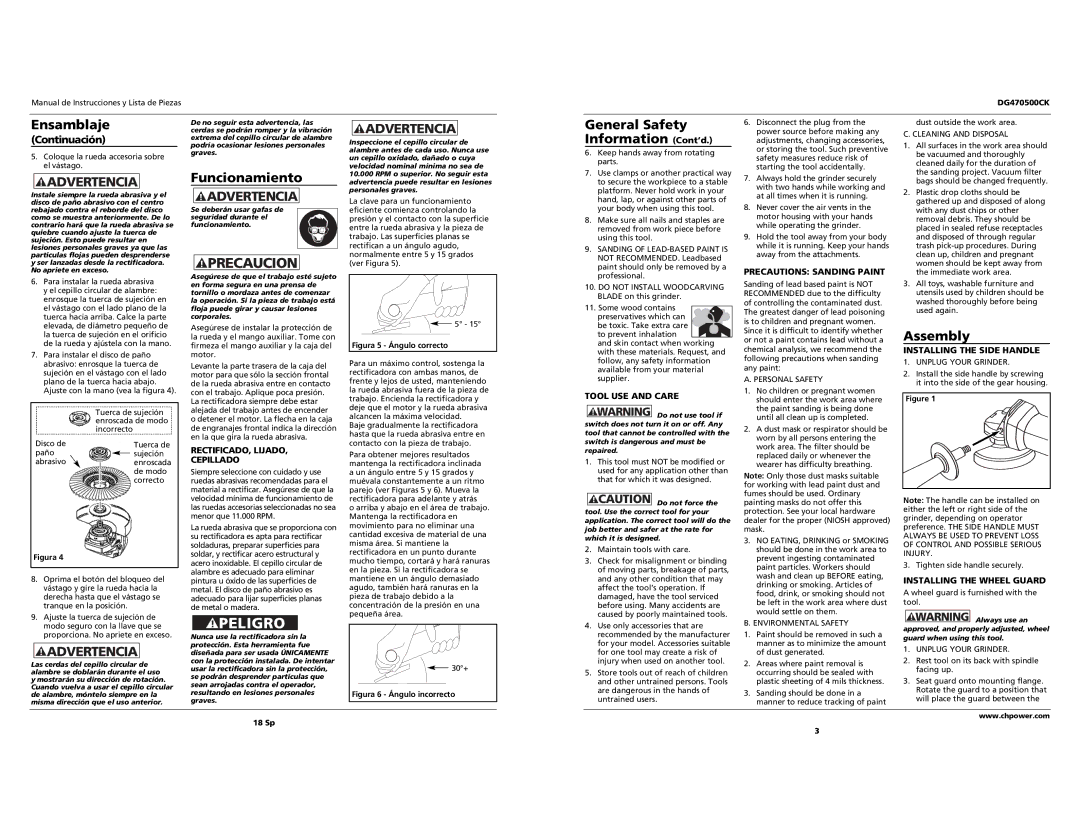DG470500CK specifications
The Campbell Hausfeld DG470500CK is a reliable air compressor designed to meet a variety of needs for both DIY enthusiasts and professionals. This model boasts impressive capabilities that make it a versatile tool for various applications, from powering air tools to inflating tires and more.One of the standout features of the DG470500CK is its robust 4-gallon vertical tank. This compact size is ideal for users with limited space, and the vertical design allows for efficient storage. The air compressor is powered by a 120-volt motor, capable of delivering a maximum pressure of 125 PSI. This ensures that users have ample power for a wide range of tasks, from spraying paint to operating nail guns.
The DG470500CK utilizes oil-free technology, which significantly reduces maintenance requirements. Unlike traditional oil-lubricated compressors, this model eliminates the need for regular oil changes, making it user-friendly and convenient. The oil-free pump also contributes to cleaner air output, ensuring that your projects are free from oil contaminants.
In terms of user experience, the air compressor is equipped with an easy-to-read pressure gauge. This feature allows for precise monitoring of pressure levels, helping users maintain optimal performance for their tools. Additionally, the unit includes a quick-connect coupler, which streamlines the process of switching between different air tools, enhancing efficiency during operation.
Another notable characteristic of the DG470500CK is its relatively quiet operation, with noise levels sitting around 68 dBA. This makes it suitable for indoor use or environments where noise reduction is a priority. The compressor also features a sturdy handle and lightweight design, which facilitate portability, allowing users to transport it with ease.
Overall, the Campbell Hausfeld DG470500CK is a well-rounded air compressor that combines portability, convenience, and performance. Its oil-free operation, maintaining ease of use, requires minimal maintenance while delivering consistent power. This model is a valuable addition to any toolkit, whether you are a hobbyist or a seasoned professional, ensuring that you are equipped to tackle various pneumatic projects with confidence.

